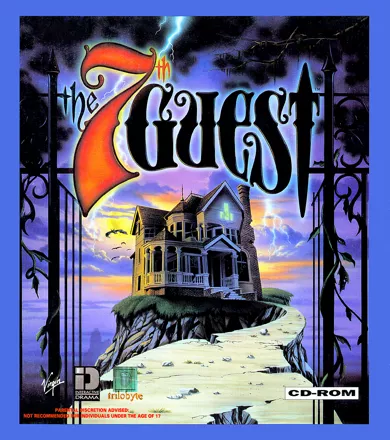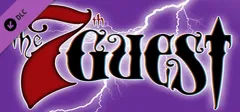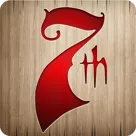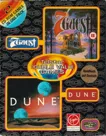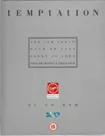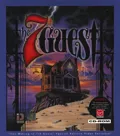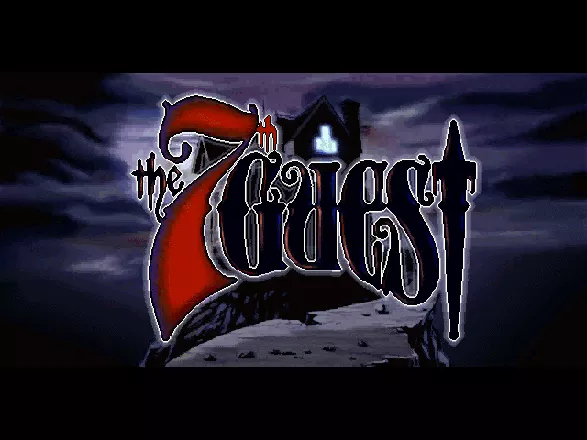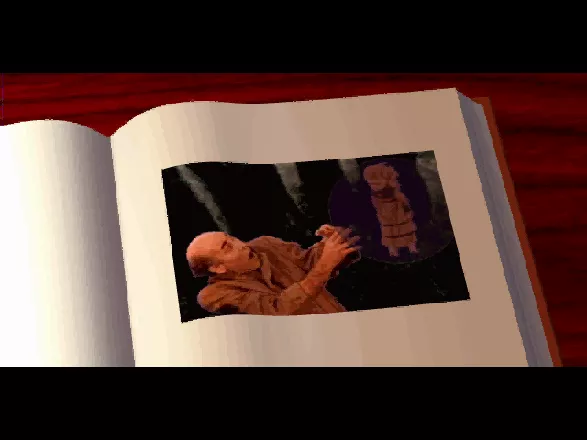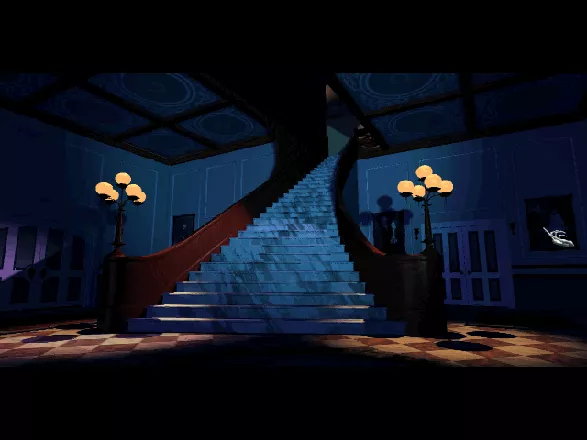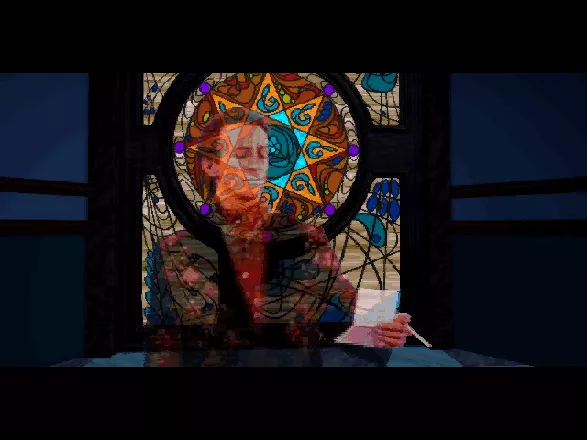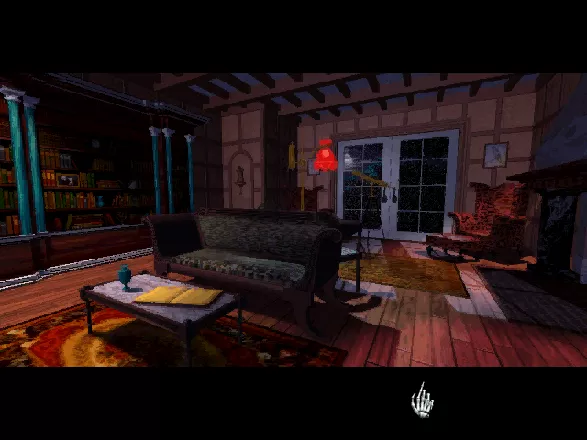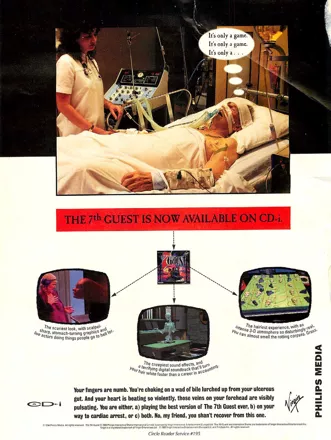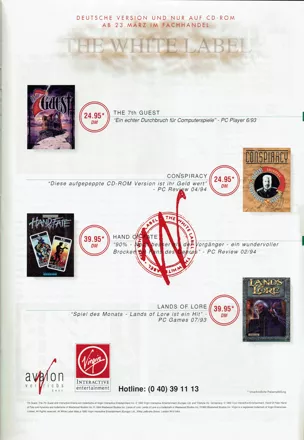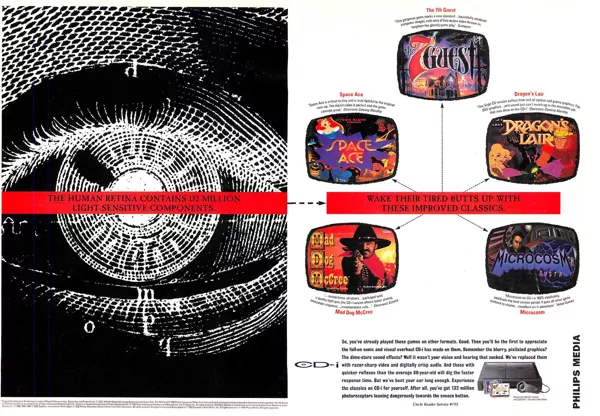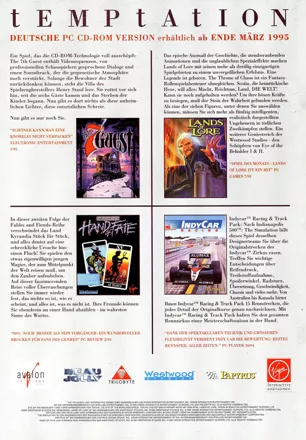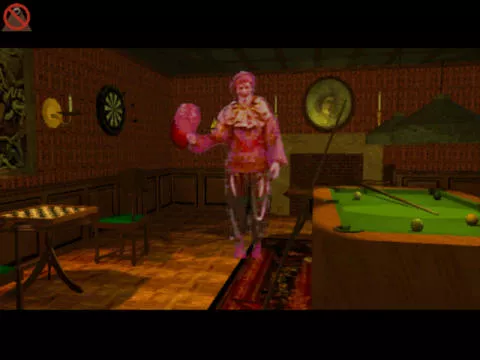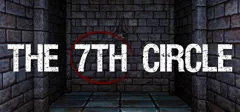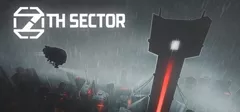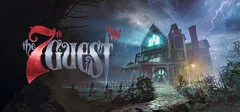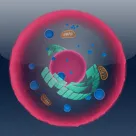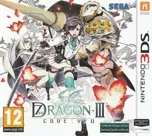The 7th Guest
Description official descriptions
The 7th Guest is a puzzle-adventure game which takes place inside an abandoned mansion. Venture into the 22 rooms of the spooky mansion, solve over 20 mind-bending puzzles to unravel a tale of revenge and horror that took place in the 1930s.
The owner of the mansion was Henry Stauf, a famous maker of children's toys. Once a homeless drifter and thief, influenced by a vision in a dream, Henry invented a wondrous doll, so incredibly life-like that it sold like wildfire. Stauf's toys became popular overnight bringing fame and fortune and changing his rags to riches. But things took a tragic turn when owners of the doll became infected with a fierce and deadly virus. None of those children recovered.
After this turn of events Stauf secluded himself inside his estate, stopped making his toys and never came into contact with the outside world for a long time. Something very strange happened when six people receive an invitation to a party at the mansion. By solving the riddles inside Stauf's "fun house", you'll delve into the past to learn what happened to them, and the mysterious 7th guest, on that fateful night.
The game is played in first person perspective with a point-and-click interface featuring horror-themed animated cursors (skeletons, bulging-eye skulls etc.). It is one of the first games to be released on the then-new CD-Rom media. The graphics are fully rendered in SVGA, and real actors and actresses bring the story to life during numerous full-motion video cut scenes. The visuals are accompanied by an original, orchestrated musical score.
To finish the game, you must solve the puzzles in Stauf's manor; each solved puzzle will unlock new rooms or new movie sequences to watch. The puzzles are quite varied; there's the classic "eight queens puzzle", another puzzle where you need to compose a sentence by rearranging letters, and others. If you get stuck, you can visit the library; a book within will give you hints on the puzzle. If the hints aren't enough, the puzzle will solve itself automatically once you consult the book enough times.
Some later, limited releases of the game came with a separate video that included a "behind the scenes" look at the making of the game and interviews with the developers.
Spellings
- האורח השביעי - Hebrew spelling
Groups +
Screenshots
Promos
Videos
See any errors or missing info for this game?
You can submit a correction, contribute trivia, add to a game group, add a related site or alternate title.
Credits (DOS version)
132 People (121 developers, 11 thanks) · View all
| Game Concept and Design | |
| Script Written by | |
| Produced by (Trilobyte) | |
| Executive in Charge of Production |
|
| Produced by (Virgin) | |
| Music Composed and Produced by |
|
| Lead Programmer (Trilobyte) | |
| Assistant Programmer |
|
| Tools Programmer | |
| Lead Artist |
|
| Art Director |
|
| 3D Modelers |
|
| QA Manager (Virgin) | |
| Quality Assurance Team | |
| [ full credits ] | |
Reviews
Critics
Average score: 71% (based on 42 ratings)
Players
Average score: 3.6 out of 5 (based on 156 ratings with 10 reviews)
The Good
This is the first CD-Rom game I ever played. It was a mind blowing experience. The spooky narrator told the story of Stauf, complete with video and foley sounds. As you wandered around the house, you would stumble across puzzles that would unlock doors and show videos of the seven guests.
As you would solve puzzles, Stauf's disembodied voice would taunt you when you lost. Normally I would find that feature annoying, but the actor performing the voice of Stauf was so hammy that you couldn't help but enjoy it.
The very best part of this game was the soundtrack. The Fatman and Team Fat managed the impossible. They created a brilliant, immersive set of themes that translated very well through the imfamous FM midi chips that were ubiquitious at the time.
Gramme Devine designed a video compression that worked pretty well for a 486. The video was the best at the time.
The Bad
This game was pretty difficult to get running. The Dos limitations required a lot of work to free up enough conventional ram. (Bill Gates fault more than anything.) The game was also very picky about the video configuration. If you didn't have enough ram on the video, the game wouldn't run.
And there's this one puzzle, the puzzle that just can't be solved.
The Bottom Line
Blast from the early days of Multimedia. I doubt kids would like this game, but its great for nostalgia minded folks like me.
DOS · by Scott Monster (984) · 2004
The Good
"The 7th Guest" was one of the first CD-ROM based computer games to really demonstrate the advantages of abandoning the traditional floppy and 3.5 disk medium. The game's full motion video clips and computer generated rooms, CD-quality music, sound effects and the risque horror themes were all really cutting edge for the computer gaming industry.
The Bad
The technological breakthroughs displayed in this game are probably lost on many contemporary gamers. First generation Full Motion Video (FMV) was no where near movie quality and almost all FMV games had B-acting and production values. While the sound effects and music are still impressive, modern gamers will likely judge "7th Guest" in terms of gameplay and horror themes. The puzzles that existed in each room tended to be very challenging and only provided short FMV clips as a reward. While the horror themes were pretty cutting edge at the time, all of the game's supernatural elements, mild profanity and sexual innuendos may seem tame in comparison to subsequent CD game such as, "Phantasmagoria 2", "Resident Evil" and "Grand Theft Auto".
The Bottom Line
"The 7th Guest" earns a place in gaming history for its ambitious usage of the CD-ROM medium. New technology had made this game possible and the creators of "The 7th Guest" showed us just how this new technology could change gaming. Today, the game may have lost some of its dazzle but it is still fun to play if you are up to facing the difficult puzzles and the mildly risqué mystery and intrigue.
DOS · by ETJB (428) · 2010
One of the first Interactive games
The Good
The atmosphere and riddles where fantastic for their time and the ghostly animation was one of the first interactive little movies we ever saw.
Also the playing hours where reasonable, probably because of some hard riddles.
The Bad
People of the new generation that didn't like the game because they didn't play it at that time and get mentally frustrated because of it's success, It deserved it greatly.
A mess to config the right graphical card (same for 11th hour) at that time. Some puzzles are real HARD. We wanted more rooms more riddles.
A kind of game that dissapeared in these times, only Pandora Box from Microsoft did a little bit look a like game with many puzzles
The Bottom Line
The creation of the interactive video games
Windows · by Nick Johnson (1) · 2004
Discussion
| Subject | By | Date |
|---|---|---|
| Genre | Cantillon (91763) | Jun 12, 2020 |
| Henry Stauf is back... | Daniel Saner (3517) | Dec 4, 2011 |
| A site to follow to get this game running on Vista | Alaka (110820) | May 30, 2009 |
| Error Unknown Asset Type - when playing the game | Gerri James | Nov 18, 2007 |
| HELP!!! | Lindsey Johnson | Sep 19, 2007 |
Trivia
1001 Video Games
The 7th Guest appears in the book 1001 Video Games You Must Play Before You Die by General Editor Tony Mott.
Budget
The overall budget for this game was more than one million dollars (a lot for a game on that times) and it was the first game on the history that comes with 2 CD-ROMs. Also one of the first ones on CD-ROM format at all.
CD-ROM
Limited versions of The 7th Guest were bundled with a 13 minute video titled "The Making Of The Seventh Guest", which included interviews with the founders of Trilobyte and supporting developers/writers/directors. The 7th Guest was so ahead of its time that, during the closing credits, one of the sound designers predicts that "in months, we will see an explosion of CDROM technology that may change the way games are distributed--all games will come this way." How right he was (although it took about two years, not a couple of months).
Endings
The 7th Guest has 2 different endings. The ending you see depends on if you cheat your way through the game (using the book in the library to solve the puzzles).
Engine
The 7th Guest was pioneering in its day; it had SVGA/VESA motion video and a fully-rendered game world that you could navigate through (with some limitations). It side-stepped technological limitations of the day by allowing all of this to take place on a single-speed CDROM drive and a 386.
All rendered rooms in The 7th Guest were built and rendered with 3D Studio for DOS.
Limited Edition
The limited edition version of the game came in a book-style box with a lovely poem inside.
Localization
Playing the game on my German CD-i system surprisingly revealed that the whole game has been localized in Speech and Text for the German market and the CD-i game system.
Matthew Costello
Matthew Costello was already an established horror writer in 1992, which is why the team turned to him to write the story and dialog.
Microscope Puzzle
The Microscope puzzle in the game is actually a game of Spot (as in the former 7-up mascot) for the NES set to the highest difficulty level. Spot for the NES was one of the previous games created by the group that made The 7th Guest.
Music
The second disk contains about half an hour worth of music, both from the game and two or three original songs.
Nintendo
Nintendo paid Virgin a million dollars up front for the rights to this game to help showcase their Super Nintendo CD-ROM system. What Super Nintendo CD-ROM system you ask? Exactly. Sometimes it sucks to be Nintendo.
Digging a bit deeper, rumour has it they knew at the time it would never be served up on one of their systems but just wanted to squat the property to spoil the chances of its ever turning up as a Sega console exclusive. Sure, it looks like a spiteful waste of money on the surface, but which company is still active as a hardware vendor? Sometimes it sucks to be Sega.
Novel
The screenwriter of the game, Matthew Costello, has also written a novel to go with the game, which was released by Prima (ISBN 0761500863). The book, which works out the game's story in more detail, can still be found in some online stores.
Patch
Trilobyte released a patch to run the game in Windows 9X/NT systems - however, the company's website vanished years ago, and the file is very difficult to find.
However, you can find the file at ComputerHope.com! http://www.computerhope.com/download/games.htm
References
The Zaphod Beeblebrox cheat code that is mentioned in the Tips & Tricks section refers to a fictional character in the humorous books The Hitchhiker's Guide to the Galaxy by Douglas Adams.
Story
The game's actors were filmed on a blue screen and placed into the game's render environments. Due to an error in the filming process, however, the filmed characters were found to have a ghostly aura around them. The game makers worked around this problem by changing the story to make all the characters ghosts.
The Official strategy guide for the game included the full pre-shooting script for the game. Innumerable changes were made during production due to various limitations (and a decision midway through to cut most of the blood and violence). Had the game been made according to the original plans, it would have been far scarier.
The Fat Man
George "The Fat Man" Alistair Sanger, the composer of the game's soundtrack has his picture in the game. You can view it here: http://www.fatman.com/t7gphoto.htm
If you tend to travel a lot, you might have been to "TGI Fridays"... A friend of The Fat Man did the interiors of the hotels and added some real portraits of The Fat Man - pretending, they are pretty old...
He booked two women from the hairdressing salon on the other side of his studio to sing on the red book-part of the soundtrack.
Awards
- Computer Gaming World
- November 1996 (15th anniversary issue) –#2 Worst Back Story of All Time
- Electronic Entertainment
- March 1994 – Editors' Choice Awards: Breakthrough Game
- FLUX
-
Issue #4 - #23 in the Top 100 Video Games of All-Time list
-
GameStar (Germany)
- Issue 12/1999 - #74 in the "100 Most Important PC Games of the Nineties" ranking
Additional information contributed by Alan Chan, Big John WV, Cabeza2000, Chris Martin, Daniel Saner, [Foxhack](http://www.mobygames.com/user/sheet/userSheetId,33543/), [Mickey Gabel](http://www.mobygames.com/user/sheet/userSheetId,584/), [Pseudo_Intellectual](http://www.mobygames.com/user/sheet/userSheetId,49363/), [Sciere](http://www.mobygames.com/user/sheet/userSheetId,30979/), [silent_driver](http://www.mobygames.com/user/sheet/userSheetId,62819/), [tarion](http://www.mobygames.com/user/sheet/userSheetId,15660/), [Tomer Gabel](http://www.mobygames.com/user/sheet/userSheetId,60/) and [WizardX](http://www.mobygames.com/user/sheet/userSheetId,1444/)
Analytics
Related Sites +
-
7th Guest Setup for Windows XP
Inferno's guide -
Crap Shoot
A humorous review on PC Gamer -
GameSpot
A huge, special article about Trilobyte's origin, work and eventual demise. An excellent read. -
Let's Play The 7th Guest
Malorie's playthrough of the game on the Let's Play Archive -
Playing Old Adventure Games: Part 6
An article at Adventure Lantern that provides a history of Trilobyte, Inc., a brief overview of the game, and instructions on installing and running the game under Windows XP (December, 2007). -
ScummVM
supports the DOS and Windows versions under Macintosh, Windows and other platforms. -
The 7th Guest - FAQs & Guides
Several walkthroughs & link to UHS hint file. -
The Dollhouse
Fan site with in-game screenshots, mouse cursors, links to purchase legitimate copies of the game, and more.
Identifiers +
Contribute
Are you familiar with this game? Help document and preserve this entry in video game history! If your contribution is approved, you will earn points and be credited as a contributor.
Contributors to this Entry
Game added by Trixter.
iPhone, iPad added by Techademus. CD-i added by Corn Popper. Linux added by Sciere. Macintosh added by Terok Nor. Windows added by Jeanne.
Additional contributors: xroox, Tomer Gabel, Jeanne, Cabeza2000, Echidna Boy, Havoc Crow, Crawly, Zeppin, Macs Black, Patrick Bregger, FatherJack, Harmony♡.
Game added September 19, 1999. Last modified April 15, 2025.


